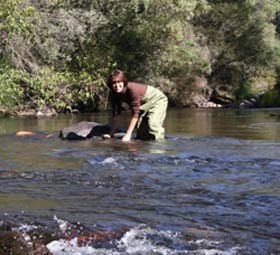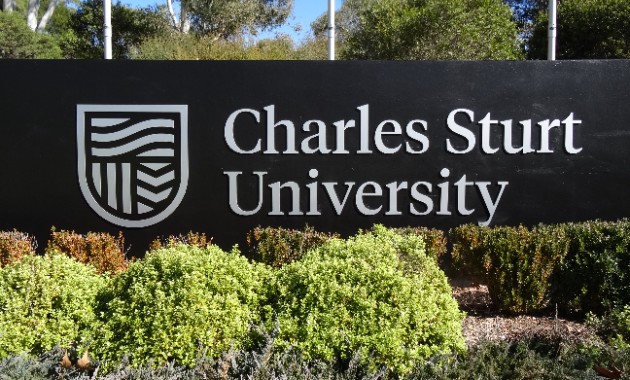Significant rain in parts of southern NSW during late summer has provided a timely opportunity for work to begin on a study into rain-filled wetlands being conducted by researchers from Charles Sturt University (CSU).
Plant and animal life has returned in abundance to creeks and wetlands, some of which haven’t filled for 10 years, giving the researchers the chance to observe the environmental response to rain after a long dry period.
 Leading the Focus Farm Wetland Study is ecologist Dr Andrea Wilson, from the School of Environmental Sciences at CSU in Wagga Wagga. The CSU research team is working with the Murrumbidgee Catchment Management Authority (CMA) Project Officer, Ms Patricia Murray.
Leading the Focus Farm Wetland Study is ecologist Dr Andrea Wilson, from the School of Environmental Sciences at CSU in Wagga Wagga. The CSU research team is working with the Murrumbidgee Catchment Management Authority (CMA) Project Officer, Ms Patricia Murray. After a visit to rain-filled wetlands on properties at Coolamon and Hay, Dr Wilson said “We don’t know much about these special wetlands. They aren’t connected to rivers or streams so they are usually dry, but we need to know how animals, plants and farmers manage these challenges.”
“There may be advantages for cropping and grazing in the years they are wet, which means they add value for agricultural production. On the other hand, some producers don’t know they have these wetlands, referring to them as a ‘boggy’ area which is a nuisance with pests.”
The project is funded by the Murrumbidgee CMA, the NSW State Government and the Commonwealth’s Caring for Our Country program. One of the project’s aims is to complete a cost-benefit analysis of alternative management options for the rain-filled wetlands, including a nutritional assessment of the suitability of wetland plants for livestock grazing.
The wetlands are also thought to be valuable as a biodiversity resource.
“Frogs, fish, water bugs, aquatic reeds and sedges have returned despite the long dry. Another aim of the study will be to develop and apply a methodology for assessing the ecological health of the wetlands that can be used whether they are wet or dry,” Dr Wilson said.
Thirteen CSU researchers, including agriculture scientists, ecologists, economists and social scientists from the University’s Institute for Land, Water and Society and the EH Graham Centre for Agricultural Innovation – a collaborative alliance between CSU and Industry & Investment NSW - are joining forces to contribute expertise to the project which is expected to increase landholder awareness about rain-filled wetlands.
Satellite mapping of the wetlands in the Coolamon and Hay districts will be prepared and this information, along with fact sheets about the agricultural and environmental uses of the wetlands, will be available at the conclusion of the project.





Social
Explore the world of social